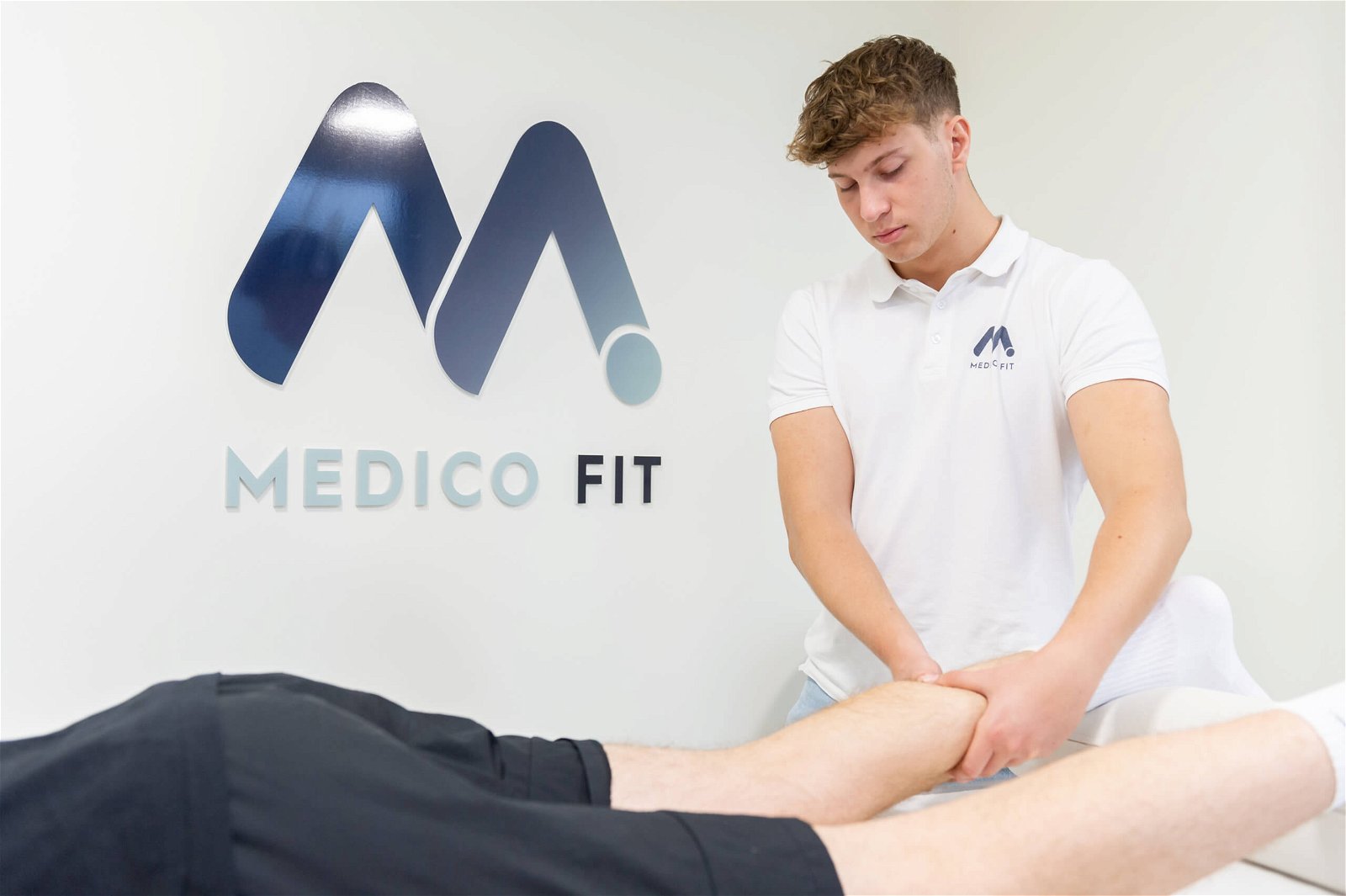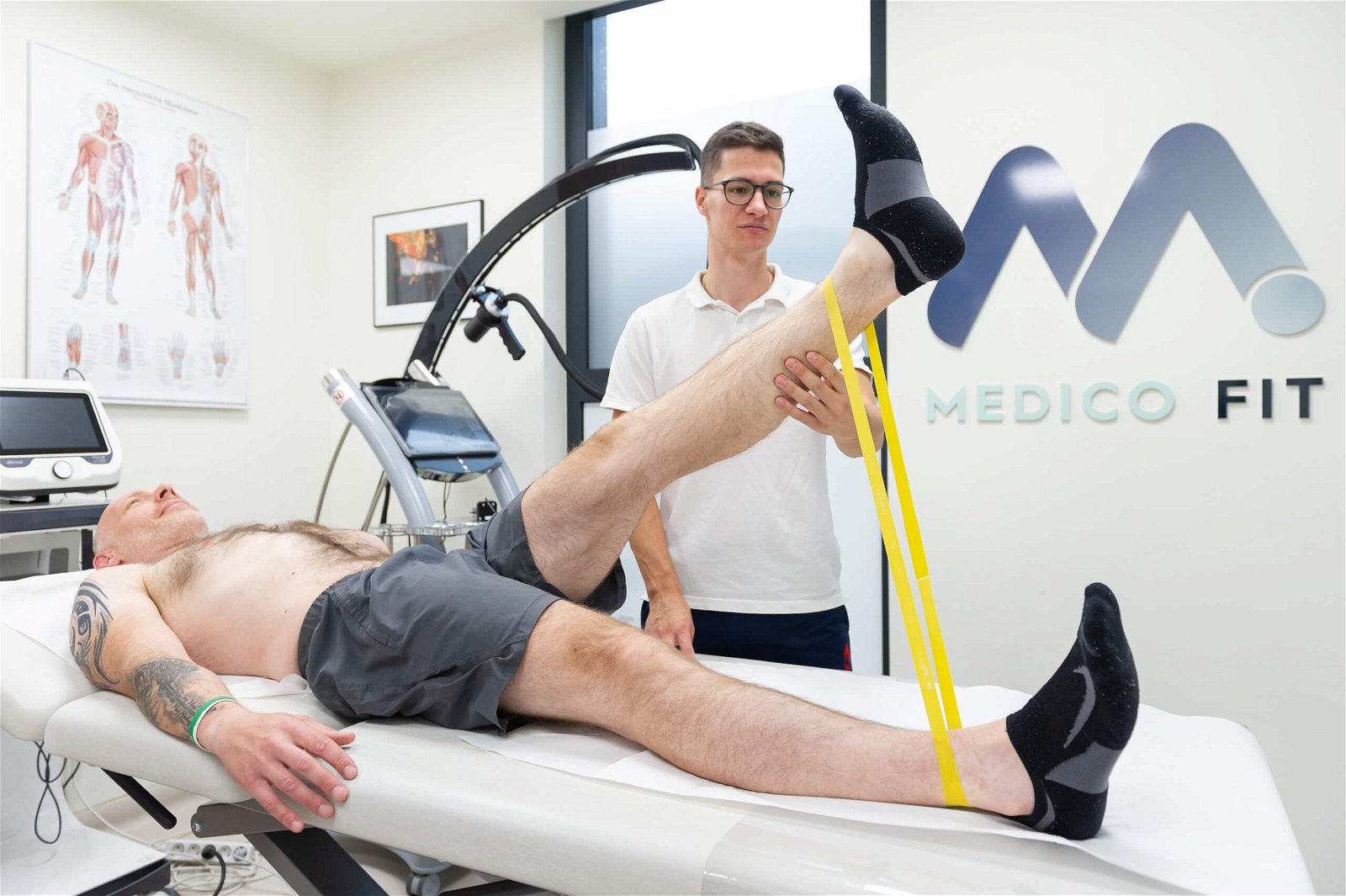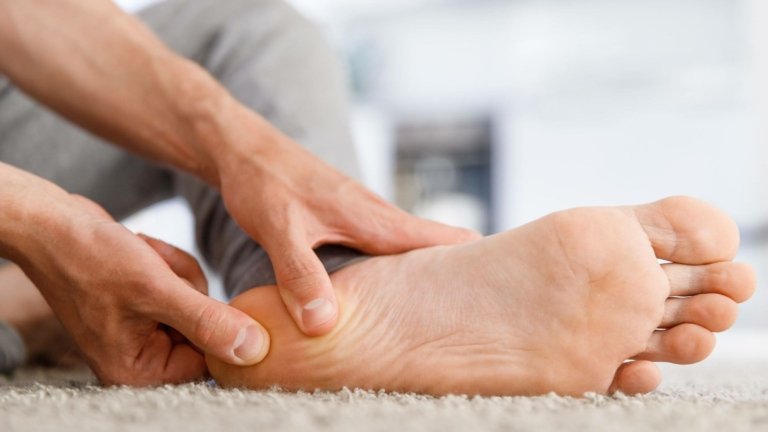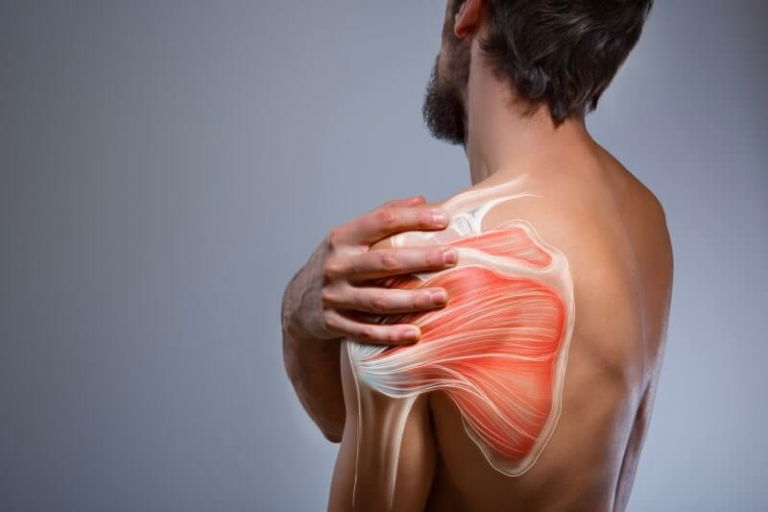According to official Eurostat data, Slovenia had 1555 physiotherapists in 2020. This figure translated into practice means that there were only 74 physiotherapists per 100 000 inhabitants, which is extremely low (4) and puts us at the very bottom of the ranking of European countries.
By comparison, the Nordic countries have the best ratio in the European Union. Norway has 250 physiotherapists per 100 000 inhabitants.
The current staffing norms in Slovenia are not able to guarantee high standards of physiotherapy practice. For years, poor agreements at health policy level have been reflected in long waiting lists for physiotherapy and dissatisfied physiotherapy stakeholders (3).
Musculoskeletal injuries are on the rise in all age groups
Musculoskeletal injuries are treated with orthopaedic physiotherapy. A branch of physiotherapy that deals with the musculoskeletal system in the case of muscle, ligament or tendon injuries, fractures, dislocations and post-operative rehabilitation of the musculoskeletal system, such as arthroscopies and endoprosthesis insertions.
Modern society is highly prone to musculoskeletal injuries.
Physiotherapy treatment of children and adolescents is on the increase due to the predominantly sedentary lifestyle, which has a negative impact on children’s motor development.

Life expectancy is increasing in modern times, which means that we have an increasing number of elderly people who, due to their physiological peculiarities, need a unique approach.
Age-related pathologies include osteoarthritis, various degenerative skeletal diseases, loss of muscle and bone mass, deterioration of balance and increased likelihood of falls and fractures. High-quality, appropriate and timely geriatric physiotherapy improves muscle strength, flexibility and balance, giving a better chance of a long and vital life.
Many companies have recently increased their awareness of the effectiveness of physiotherapy on overall health, employee satisfaction and its positive impact on work performance. In Europe, musculoskeletal disorders account for as much as 40% of all occupational diseases. They have a negative impact on the individual, reducing quality of life, and on the other hand are an economic problem, due to increased sickness absenteeism at the workplace and increased need for medical care (2).
The Slovenian public health system pays insufficient attention to physiotherapy treatment, which is reflected in the fact that there is currently a waiting list of more than 40 000 inhabitants (8).
We have 8 visits to a physiotherapeutical infirmary as part of the public health system
The current public health system allows a patient 8 visits to a physiotherapeutical infirmary. When, if ever, is this enough?
8 visits are sufficient when the focus is on addressing acute symptoms such as reducing pain, swelling, increasing mobility and strengthening muscles.
The point of professional physiotherapy treatment is to address the cause, for which 8 visits are absolutely not enough.
The duration of rehabilitation is necessarily determined by the individual condition and progress of the patient and is therefore impossible to determine in advance.
Physiotherapy treatment for most orthopaedic injuries and conditions takes approximately 2 to 3 months, with regular rehabilitation (7).

It's a long way from pain to a physiotherapist
The referral for a physiotherapist is written by the general practitioner, who assesses the level of urgency of the treatment. The doctor prescribes a small (30 min), medium (45 min) or large (60 min) physiotherapy treatment, which vary in duration.
This raises the question: is the only way to get physiotherapy treatment really through a doctor? Is this the most effective way?
Australia pioneered direct access to a physiotherapist in 1975, which means that patients can make an appointment directly with a physiotherapy clinic without the need for a general practitioner’s referral. Many developed countries have followed suit, such as New Zealand, Canada, most of the United States, the Nordic countries, the Netherlands, etc. (1).
Concerns that there would be inadequate treatment and harm to patients were unnecessary. On the contrary, according to studies and currently known data, satisfaction rates have increased and treatment costs have decreased (10).

Such a system is currently only possible in private physiotherapy in Slovenia. Individuals with various injuries can make an immediate appointment at a private physiotherapy clinic, where they can receive appropriate help to treat the symptoms and address the cause of the problem.
Within such a system, the individual takes more responsibility by choosing a trustworthy treatment clinic.
We advise you to choose clinics that bring together several different specialists in one place when you have a problem, as this is the future and the standard of modern treatment for musculoskeletal disorders and injuries.
The waiting lists for physiotherapy treatments are too long
According to the waiting lists on the e-Health portal (actual variations are possible), in the Central Slovenia region it is usually necessary to wait until May 2023 for physiotherapy treatment under the urgency level. In some clinics it is less, and in many clinics much longer (5).
The urgency level: very quickly, is the highest level and from a physiotherapy point of view it should be treated immediately. According to the data available on the e-health portal, the first examination in the Central Slovenia region should take 35 days, but in many places the wait is much longer (6). This is unacceptable from a professional point of view.
Delays in the rehabilitation of musculoskeletal injuries and disorders that require immediate treatment result in poorer prognosis, functionality and prolonged course of treatment.
People in modern times suffer from conditions and diseases that we know how to treat physiotherapeutically, but simply because of the system they do not get the treatment they need in time, which is ethically unacceptable.
The article highlights the obsolescence and inefficiency of the public healthcare system in Slovenia, which causes harm to the patient as they are left to fend for themselves and increases dissatisfaction among physiotherapists who, with their professional treatment, are unable to treat patients in a timely manner and thus provide them optimal treatment.
What can you do while waiting for physiotherapy treatment?
First choice – Do nothing!
Have you received a work order for a physiotherapy appointment for which you have to wait an extremely long time? One of your personal choices is to do nothing and simply wait for an appointment. We advise against this choice.
For example, you are experiencing severe lower back pain, which is the most common musculoskeletal disorder in modern times. You are unable to work and are on sick leave.
Over a long period of time, as you rest and wait, the pain and all the associated symptoms will not get better, but will only get worse.
Treatment, when you finally get access to it, will be more difficult, more time-consuming and less likely to improve than if you had started treatment as soon as the problem started.
Each week of inactivity (lying down) results in a loss of about 12% of muscle mass. During a period of 3-5 weeks of lying down, you lose about 50% of your total muscle mass (9).
Over time, an acute condition becomes chronic, which for you means prolonged pain, reduced functionality, increased need for sick leave from work and increased rehabilitation time.

Second choice – You are actively waiting for physiotherapy treatment!
The second choice is better than the first, as you have put yourself in an active role and want to improve your health while you wait for physiotherapy treatment.
Is this the best possible choice? No. However, it will be a long time before you receive public professional help, so here are some key and useful tips to help you at home.
- Severe pain, which often disturbs sleep, is a warning to seek professional help in time. Sleep deprivation leads to an increased risk of falls and injuries, obesity, poorer physical endurance, high blood pressure, memory and learning disorders, and general irritability, poorer well-being and fatigue, with consequent negative consequences on both physical and emotional-social levels.
- Ensure sufficient/increased physical activity in relation to your illness or injury. Taking into account the limitations allowed by your pain and your specific medical condition, try to be physically active enough. For example, if you are struggling with upper limb problems, make sure you take a long walk every day. It is worth remembering that prolonged use of painkillers or anti-inflammatory drugs is ineffective. If your current state of health does not allow you to carry out simple daily activities, it is time to seek self-pay professional help. Ensure adequate and correct nutrition to support the body’s healing processes. Healthy eating, like exercise and movement, is subject to conflicting evidence. The food pyramid, according to 2014, ranks adequate intake of unsweetened liquids as the lowest, followed by vegetables and a smaller percentage of fruit, followed by cereals, cereal products and other carbohydrates to a lesser extent, followed by meat, fish, eggs, legumes and dairy products to a lesser extent, with fat coming next to last and sugar and sugary foods to a lesser extent.
- Get enough and good quality sleep. Sleep is the backbone of health and quality sleep is one of the most important things we do every day to stay healthy. Sleep has a beneficial effect on cardiovascular and immune system regulation, hormone regulation, mental function, neurological system, etc. We make sure that we get a good night’s sleep by having the same sleep rhythm all days of the week, keeping the bedroom protected from noise and light, and keeping it at a suitable temperature (not too hot). Remove electronic devices from the bedroom and do not use them just before going to bed. Sleep is influenced by diet and sports activity. Do not drink large amounts of fluids before going to bed and do not consume caffeine in the evening. Sleep can also be disturbed by the consumption of alcoholic beverages and smoking in the evening (11).
Food provides for the physical energy needs of the body as well as the emotional and social needs of the mind. Food is a source of comfort, as it is used to console, celebrate and mourn. Injury or illness to the musculoskeletal system alters physiological and emotional needs. The stress that musculoskeletal dysfunction brings with it causes loss or increased appetite.
Choose a self-pay physiotherapy treatment!
The start of treatment at Medicofit begins with a diagnostic examination, through which a diagnostic physiotherapist gains insight into the physical and functional state of your body.

The diagnostic examination at the Medicofit Clinic includes:
- Clinical testing of the injured joint, tendon or muscle,
- An assessment of the mobility and functionality of the injured joint,
- Examination of adjacent joints and assessment of potentially associated musculoskeletal problems,
- Examination and assessment of previous injuries and pathologies,
- Medical history,
- Interpretation of the specialist report,
- Review of performance of basic movement patterns,
- Measurement of imbalances in joint mobility and muscular endurance,
- Diagnostic report,
- Recommendations and guidelines for pain and injury rehabilitation,
- Injury rehabilitation strategy in the Medicofit clinic.
Special physiotherapy at Medicofit
The diagnostic examination enables us to gain a thorough understanding of the causes of your problems and, based on the information obtained, to create an individual physiotherapy treatment strategy.
Specialised physiotherapy treatment includes active kinesiological training, which focuses on improving your functional movement and gait biomechanics, establishing the correct load capacity of the spine and improving proprioceptive body control.
Private physiotherapy treatment is light years ahead of public healthcare (which only covers certain types of assistive technology!), thanks to state-of-the-art assistive technology that achieves highly effective treatment results.
Effective and professional modern treatment involves the disciplinary collaboration of experts in medicine, physiotherapy and kinesiotherapy, which is the daily practice of the experts at the Medicofit clinic.
Welcome to the future of physical treatment!
- Bury, T.J. and E.K. Stokes, Direct access and patient/client self-referral to physiotherapy: a review of contemporary practice within the European Union. Physiotherapy, 2013. 99(4): p. 285-91.
- Dalager T, Justesen JB, Sjøgaard G. Intelligent Physical Exercise Training in a Workplace Setting Improves Muscle Strength and Musculoskeletal Pain: A Randomized Controlled Trial. Biomed Res Int. 2017;2017:7914134.
- Dnevnik, 2019. Nezadovoljni fizioterapevti zahtevajo kadrovske normative in regulacijo poklica. Available at: https://www.dnevnik.si/1042897226 [10.10.2022]
- Eurostat statistics explained. File: Practising dentists, pharmacists and physiotherapists, 2020 Health2022.png. Available here.
- E-zdravje. Čakalne dobe za fizioterapevtsko obravnavo, stopnja nujnosti redno, osrednjeslovenska regija. Available at Čakalne dobe [10.10.2022]
- E-zdravje. Čakalne dobe za fizioterapevtsko obravnavo, stopnja nujnosti zelo hitro, osrednjeslovenska regija. Available Čakalne dobe [10.10.2022]
- FinancePro. Bolečine v hrbtu so najdražji zdravstveni problem delodajalcev. Avaibale at ProFinance [9.10.2022]
- Šašek, N., 2022. Pri nas le 77 fizioterapevtov na 100.000 prebivalcev, pacientov pa vedno več. Available at 24ur.com [10.10.2022]
- The oseooperformance clinic. The impact of inactivity. Available at Osteoperformance [13.10.2022]
- Tracy J. Bury, Emma K. Stokes, 2013. A Global View of Direct Access and Patient Self-Referral to Physical Therapy: Implications for the Profession, Physical Therapy, 93 (4), pp: 449–459.
- Žibret, A. Kako poskrbeti za dober spanec? Delo. Available at Delo [13.10.2022]














